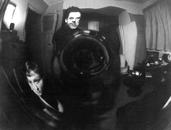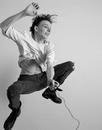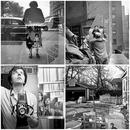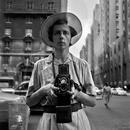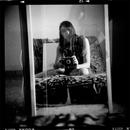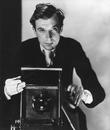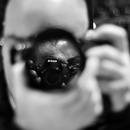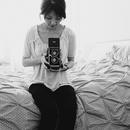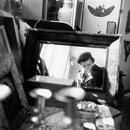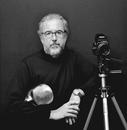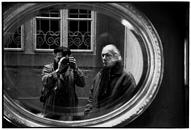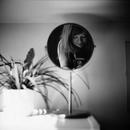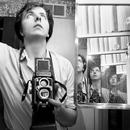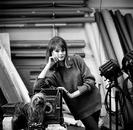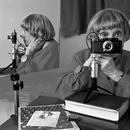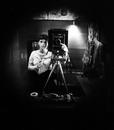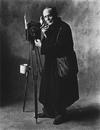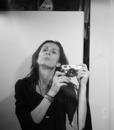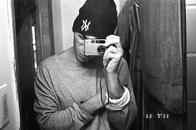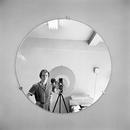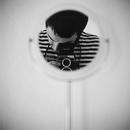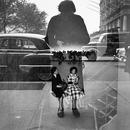The illusion of being creative
When you arrive at via Zambon de’ Dauli, you are likely to be a little bit impatient and excited. Perhaps your heart is pounding. As with the arrival of an infant son, your first concern is whether or not he is "healthy," and only later do you analyze his positive qualities and defects. (The same holds true with film photograph. You shoot an image and hope that it turns out okay). Your expectations are almost never met. But when it happens that they are, it was a time of celebration.
This is now a distant memory. Today photographs are downloaded, when they were once developed. Even the intense meaning of the words alone is a sign of change.
The work done in a sittings studio today may seem to be the same as it was then. However, developing photos required a commitment of an entirely different nature and scope. A photo shoot had to be prepared carefully, several days ahead of time. The set was designed well before it was assembled. You had to test the lights, various cameras and lenses. You had to choose the depth of field, grain type and, in the wake of this, the film speed. You would discuss, sometimes heatedly, about the possible use of filters. The variables were potentially endless and they all had to be adapted to the style of the shoot each and every time. It was a conceptual job that had many practical consequences based on materials (camera, lights, panels, umbrellas, film, lenses, filters, carpentry, bric-a-brac, etc.). For this reason, us art directors had to work closely with the photographers before, during and after the shoot. Each service was carefully analyzed cold, before being archived, to evaluate the effectiveness of the critical choices, because they served as a lesson. Therefore each shoot required research, beginning anew with every project. The preliminary stages almost always involved the art director and photographer going out for dinner. I used the strategy of conviviality to impose difficult working conditions or when a desired result seemed to require a particular virtuosity, special attention and awareness.
If the job was based on the so-called small format, i.e. 24 × 36 mm, things moved more quickly, both in terms of the preparation for the shoot and in the actual shoot itself. But if you switched to medium format (6x6 and similar) it became more serious, it raised the bar, and the pressure. The margin of error was small and you couldn’t waste anything. And then he was there, the totem, the optical table. I only worked with optical table with a 20x25 cm plate - a huge plate with unimaginable resolution - not only for still lives, but also for fashion and sport shoots, despite the unmanageable variables of human posture. It seemed to me that the table was similar to the Platonic idea of reality, the fact that it could reproduce a 20x25 cm original. A reproduction that seemed more real than the original. Each shot with the optical table was cloaked in sanctity, and it cost a fortune. Every detail was carefully checked in advance; therefore I spent most of the day under a black cloth. It was called "photographic assistance" and it certainly was. My role was crucial because of the impossibility of error. At the sound of the triggering device, I always held my breath, as if for superstition. Before and after a great shoot, I often couldn’t sleep, exasperated by a mixture of excitement and terror; the excitement waiting for what could possibly result in a masterpiece, and terror in doubt that just the opposite would occur. And at the very end of the shoot, I would go to via Zambon de’ Dauli to pick the printed image, with bated breath.
Photography - and here I speak of advertising photography - had always been, and still was, based on consciousness, knowledge, choice, risk and passion. Now, this is no longer the case. Today photography - and here I speak instead of photography in general - has been reduced to a monstrous and universal mirror of the narcissism of the masses. And, although this may seem somewhat of an exaggeration, this narcissistic look at the world also affects our job as art directors. It affects everything and everyone, even the professional photographers. Technical ability is no longer required and has resulted in a new generation of soulless, photo-shopped images. Art directors and photographers no longer meet in person, but discuss the shoot briefly on the phone. The thought being that within the one million shots, there is always a good one, according to statistics. No longer are shoots carefully curated since you can change just about anything in post-production. You can add and remove at will. The shot often is only a dirty base, a sketch, a blot of ink.
Now there is no longer time to strike up a true collaboration with the photographer, now we send data. And if there is no time, it’s because there is no money: today the picture is worth very little. Rather than commission a photo shoot, one contacts an image bank. It’s a bit like substituting Sunday lunch with food in pills, predigested. In short, they have provided us with more powerful, cheaper and faster machines forcing us into a state of starvation. It’s a contradiction of the so-called "technological progress" that should make us reflect and which also affects fields far more disturbing than ours.
Today, my photographer friends, often real artists, who are old enough to say "I was there", were forced to witness, helplessly, the sad and destructive downturn of their craft. The digital camera has swept away almost everything and has definitely killed a profession. If someone is able to actually remain "a photographer" (as I intend it), it’s because he was able to make a name for himself in time, or because he comes from a rich family and can afford this expensive hobby. Or because he’s fucking stubborn and adorable and bohemian. Everyone else had to pass directly from art to the assembly line, without “passing go.”
But the problem is always in the eye of the beholder. And we are the beholders, all of us. I believe that much of the devaluation of photographic art is a result of narcissism, which I mentioned earlier, which has led every man and woman to feed only his or her own interests: to look at him- or herself. Each actor and director produces his own self-indulgent home movie composed of many repetitive self-portraits. "No one can capture what he sees. One only shows oneself. The screen of your phone becomes a mirror and not window onto the world" says Roberto Cotroneo in his latest book "Lo sguardo rovesciato,” in which he adds, with impeccable acumen: "Not knowing increases the dizzying illusion of being creative. But it generates a self-image that is far better than is really allowed by reality."
19/10/2015 Filippo Maglione


